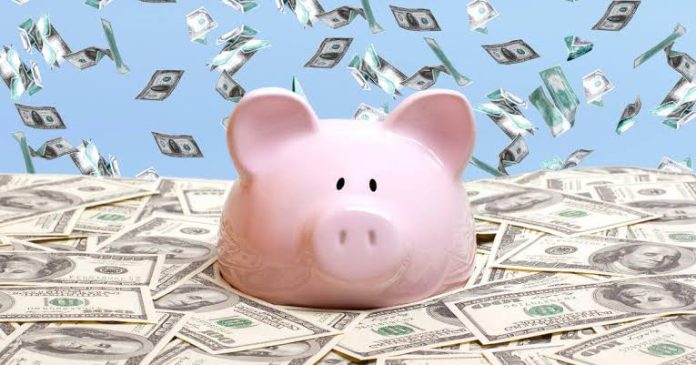5 Smart Ways to Drastically Boost Your Monthly Savings
Boosted savings = higher investments = greater wealth
Image by Here and now, unfortunately, ends my journey on Pixabay from Pixabay
Building wealth is simple — increase your income, limit your spending, invest prudently. Rinse, repeat, and let compounding do its magic.
Simple doesn’t mean easy though— if it were, the world would be rampant with millionaires, not debt-ridden households.
 Learn More
Learn MoreWhile most work hard and get timely pay raises, they fail to limit spending. Falling prey to lifestyle inflation, even the “richest” of folk rack up debt and save little to none.
I want to share 5 clever ways to supercharge your savings —when you save and invest more, your wealth inevitably goes up.
Do This to Your Purchases
In this era of consumerism, it’s never been harder to not buy something.
Like kids attracted to candy, we rush to purchase worthless things — armed with our limitless credit cards.
“We buy things we don’t need with money we don’t have to impress people we don’t like.”
— Dave Ramsey
Come a few weeks, months, or years — and those things are dust-catching sources of regret. We think, “Why in the actual world did I shell money for this?, or “What was I smoking when I bought this?”
To combat this, postpone your purchases. The more expensive the item, the longer the delay — ranging from a few days for those designer clothes to a few months for that fancy car.
If you still feel the same rush, go ahead and buy — you’re unlikely to regret it.
But if you don’t (which is most often the case), you’ve saved yourself some money.
Wield Your Credit Cards the Right Way
Credit cards are double-edged swords — while they can be used meaningfully, you can also use them to your own financial ruin. This is for two main reasons:
High limits. If you’re earning $5k a month but have a credit card with a $20k limit, no doubt you’re going to rack up some unaffordable bills.
Usurious interest rates. Combine 30 to 40% yearly interest rates with compounding and you’ve got a lethal combination.
While you can’t control the latter, you can control the former — either get a lower limit credit card or set your own mental limits to it.
Promise to yourself, “I won’t spend more than 30% of my credit limit.”, and “I’ll pay my credit bills on time.”
When used responsibly, your credit score goes up and you can wield your cards for a myriad of offers and cashback— a win-win.
Pay Heed to This Popular Adage
When you top up your streaming balance, you’re making Netflix richer. When splurging on clothes, Levi’s coffers are getting fatter. When eating out, you’re enriching the restaurant owner’s pockets.
Your own wallet? Sparse with the meager pennies that are left after paying everyone else.
Investing these tiny “savings” will yield nothing. This is why you should pay heed to the adage, “Pay yourself first”.
Basically, don’t spend and invest what’s left but save and spend what’s left.
With this, your willpower is taken out of the equation. Money that isn’t visible is not available — and psychologically, $800 left to spend will feel as good as $1000.
An additional hack is to automate this through Automatic Investment Plans (AIP) — set up your investments so “On the date X of every month, an amount of Y will flow into the investment Z”. If you’re Indian like me, this is called a SIP.
Buy in Bulk
Bulk purchases are a win-win — more units sold for the seller and a lesser price for you. Why else do you think wholesale prices are so much lower than retail ones?
Back in college, we capitalized on this through supplement purchases — 5 to 7 of us buying enough to last us 6 to 8 months. At one point, we had even negotiated prices directly with an Amazon seller.
The best way to plan bulk purchases is through a shopping schedule — once or twice a month where you spend a few dedicated hours to buy.
You can have different days for clothes, groceries, gym supplies, and electronics.
Analyze These Silent Culprits
While one-time purchases dent only specific months, recurring ones chip away month in month out — leading to massive expenses in the long run.
Internet/Electric/Smartphone Bills. Do you really need blazing fast internet? Or the geyser during blazing hot summers? Maybe turn the lights off when leaving a room.
Subscriptions. Netflix, newsletters, cable TV, Tinder, Spotify, delivery apps. And god forbid OnlyFans — when you jot them down, you’ll see you don’t need most of them.
FMCG. Fast-moving consumer goods such as milk, chewing gum, supplements, meat, eggs, etc. Can you switch to a cheaper brand without compromising on quality? Or reduce the quantity of usage?
Services. Be it a salon haircut, getting your car washed, or domestic help, see if you can go lower without compromising on quality.
The key with all of the above isn’t being miserly — but being prudent. If scaling down a recurring purchase reduces the quality of your life, keep it the same.
But in most cases, you’ll be able to shave a good 40 to 50% off your recurring expenses.
Final Words
For a long-lasting boost in savings, you need a permanent reduction in expenditure — more so, a mindset of living below your means.
It’s a shift from “Buying things you can’t afford” to not buying even the ones you can afford. The first step is not giving in to lifestyle creep — scaling your lifestyle according to your increasing paycheck.
You can either look wealthy or be wealthy — the choice is up to you.
CONTRIBUTED BY Neeramitra Reddy.
Read More: 7 Mindless Money Wasters People Think Are Acceptable
Read More: 7 Money Lessons That Will Change Your Life Immediately.













![The 17 Habits Of Truly Wealthy People That you can easily adopt now [Real powerful stuff]](https://worldfamilydigest.com/wp-content/uploads/2022/02/FA033A84-800B-424D-8DEA-2BB8AD9E91F6-100x70.jpeg)

